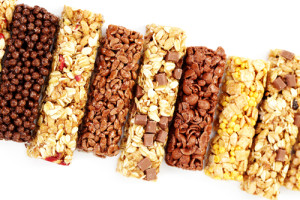By Lisa Collier Cool
Dec 02, 2013 – Yahoo Health
 If a miracle ingredient found in many tasty, inexpensive foods helped you lose weight, live longer, and avoid dangerous diseases, wouldn’t you eat it every day?
If a miracle ingredient found in many tasty, inexpensive foods helped you lose weight, live longer, and avoid dangerous diseases, wouldn’t you eat it every day?
Actually, there is such a food ingredient—dietary fiber—and most of us eat too little of it, putting ourselves at increased risk for heart problems and other health woes, according to a new study published in the December issue of The American Journal of Medicine (AJM).
In fact, the study found that more than 80 percent of the 23,168 people studied consumed far less than the recommended amount of fiber—and most men averaged less than half of the amount needed to keep their hearts healthy.
The researchers reported that compared to people who eat the most fiber, those who ate the least had a much higher rate of heart disease risk factors, such as obesity, chronic inflammation, and metabolic syndrome.
Metabolic syndrome is a dangerous gang of five metabolic villains that doubles risk for heart attack and quintuples it for type 2 diabetes, as I reported in a recent article. Here’s a closer look at the study.
What’s the link between fiber and heart disease risk?
The researchers reported that previous studies suggest that dietary fiber protects against heart disease by reducing blood pressure, cholesterol, and biomarkers of inflammation, all of which play a major role in the development of heart disease, the leading killer of Americans.
In addition, a diet that is rich in fiber has been linked to weight loss (by helping people feel full) and improved insulin sensitivity. Obesity and insulin resistance can contribute to risk for both heart disease and type 2 diabetes, which in turn, also increases the threat of developing heart disease.
What are the other health benefits of fiber?
In a 2011 study of nearly 400,000 older adults, conducted by the National Institutes of Health (NIH) and American Association of Retired People (AARP), those who ate a fiber-rich diet had the lowest death rates during the 9-year study.
The study found that men ages 50 or older who ate the most fiber had an up to 56 percent lower risk for dying from cardiovascular disease, respiratory illnesses, or infectious diseases, compared to men who ate the least fiber. In women ages 50 and up, a high-fiber diet reduced fatalities from those conditions by up to 59 percent.
Another 2011 report, by the American Institute for Cancer Research (AICR), concluded that more than 64,000 cases of colon cancer could be prevented if Americans ate more fiber-rich plant foods, cut down on red meat and alcohol, exercised more, and stayed lean.
After analyzing hundreds of scientific papers, the group’s experts concluded that the evidence that foods containing fiber reduce colon cancer risk is now “convincing.”
How much fiber should you eat?
The Institute of Medicine recommends 38 grams of fiber daily for men ages 19 to 50, and 30 grams daily for men over 50. Women ages 19 to 50 should eat 25 grams daily, while the goal for women over 50 is 21 grams daily.
In the AJM study, which analyzed dietary data from participants in a national health survey, daily fiber intake only averaged 15.7 to 17 grams, less than half the amount advised for men ages 50 or younger.
Which foods contain the most fiber?
 The AICR recommends a plant-based diet that is high in such fiber-rich foods such as fruits, vegetables, beans, and whole grains.
The AICR recommends a plant-based diet that is high in such fiber-rich foods such as fruits, vegetables, beans, and whole grains.
Also be aware that fiber comes in two varieties, as I reported recently. Insoluble fiber helps food move through the digestive system more quickly, helping cut risk for colon cancer. This type of fiber is found in whole wheat, bran, nuts, and many vegetables.
Soluble fiber, which helps reduce cholesterol and blood sugar, is found in such foods as oats, peas, apples, beans, citrus fruits, carrots, and psylium, according to the Mayo Clinic. It’s best to increase the amount of fiber in your diet gradually, to help your digestive system adjust to the change.






